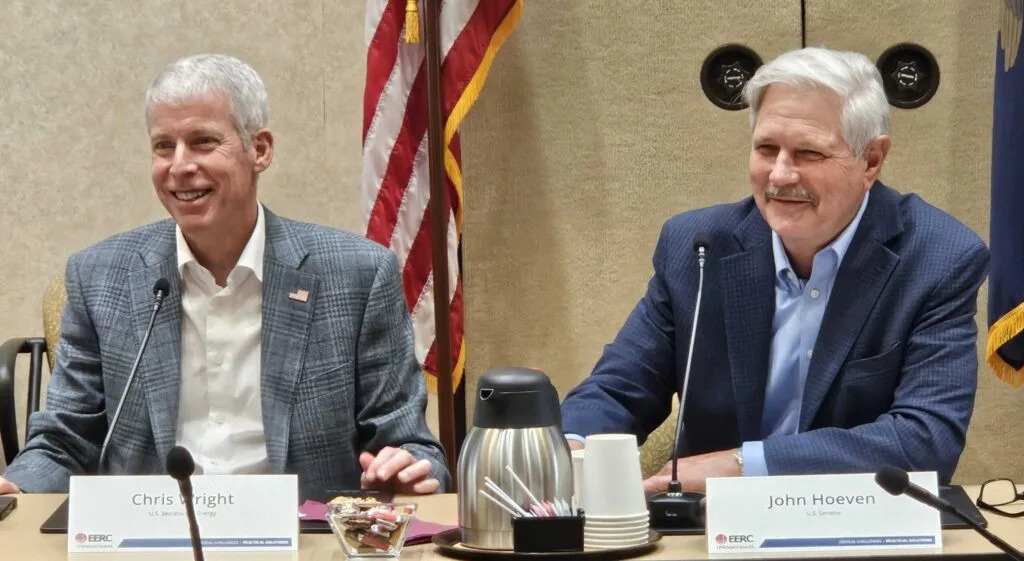
Energy Secretary Chris Wright, left, and Sen. John Hoeven lead a roundtable discussion on enhanced oil recovery on Aug. 13, 2025, in Grand Forks, N.D. (Jeff Beach/North Dakota Monitor)
GRAND FORKS, N.D. — North Dakota Sen. John Hoeven urged the state’s coal and oil industries to work together to thrive in the long term and meet the increasing demand for energy.
Hoeven on Wednesday touted an effort to have the state’s coal plants supply carbon dioxide to the oil industry to help improve the productivity of oil wells and extend the life of coal-fired power plants.
“Today is about linking our coal plants and the Bakken,” Hoeven said, referring to the Bakken shale formation that has helped make North Dakota the nation’s No. 3 oil-producing state.
Hoeven hosted U.S. Energy Secretary Chris Wright at the Energy and Environmental Resource Center in Grand Forks, which performs research for the coal and oil industries.
Hoeven and Wright were joined by energy industry and government representatives, including Rep. Julie Fedorchak, R-N.D., to discuss how to speed up the development of enhanced oil recovery. The technology uses carbon dioxide or other gases are pumped into an oil well to help force more oil to the surface.
Hoeven likened enhanced oil recovery to horizontal drilling and hydraulic fracturing, technologies that helped launch the Bakken oil boom more than a decade ago. Wright was part of the boom as the founder of Liberty Energy.
Using enhanced oil recovery has the potential to improve how much oil can be recovered from an oil well, which currently is between 5% and 15% in the Bakken.
The EERC this year estimated that injecting CO2 could lead to an additional 5 billion to 8 billion barrels of oil from the Bakken Formation over the next 30 to 50 years. The extra oil production would help ensure steady tax revenues for the state from the oil and gas industry.
Wright credited Hoeven with pushing through changes in the Republican-led megabill that improve the tax incentives available for using carbon dioxide for enhanced oil recovery.
The bill included a provision increasing the 45Q tax credit for enhanced oil recovery from $45 per ton of CO2 used to $85 per ton. The increase puts it on par with the tax credit for permanent underground storage of CO2.
Coal plants are seen as one potential source of CO2 but roundtable participants said it will take substantial investments to implement the carbon capture technology.
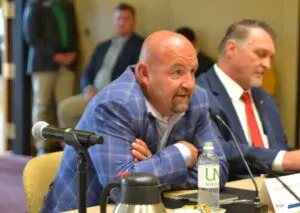
Robert “Mac” McLennan is the CEO of Minnkota Power Cooperative, which has been developing a carbon capture and sequestration project known as Project Tundra.
Carbon capture and enhanced oil recovery both have been done in North Dakota.
Basin Electric Power Cooperative captures CO2 at its coal gasification plant near Beulah and sends it through a pipeline to an oil field in Canada where it is used for enhanced oil recovery.
“We would rather keep our CO2 in the United States than having to ship it to Canada,” said Ryan Norrell, Basin’s vice president for government relations.
The pipeline passes through some of North Dakota’s prime oil production area.
Enhanced oil recovery also has been used on small-scale test projects in North Dakota.
McLennan said building a large-scale carbon capture and utilization system would likely take five years.
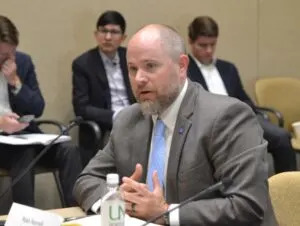
Oil prices have been on the decline in recent months and the Energy Information Administration on Tuesday released a forecast of declining oil prices through the end of the year.
“We still have some economic uncertainty right now that I think will be cleared up in the next few months,” Wright said. But after that, he predicts a “much more bullish outlook for global demand for oil.”
North Dakota Gov. Kelly Armstrong, who has a background in the oil industry, said there will never be a perfect time to push ahead on enhanced oil recovery.
“If we wait for it to be perfect, it will never happen,” he said.
SUBSCRIBE: GET THE MORNING HEADLINES DELIVERED TO YOUR INBOX

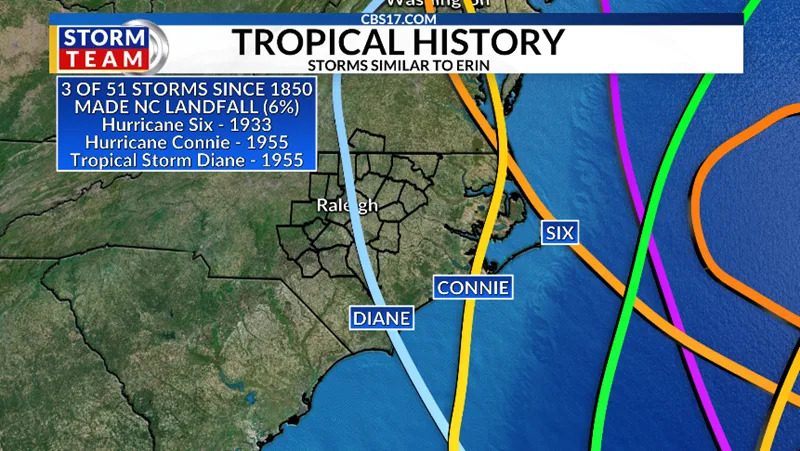

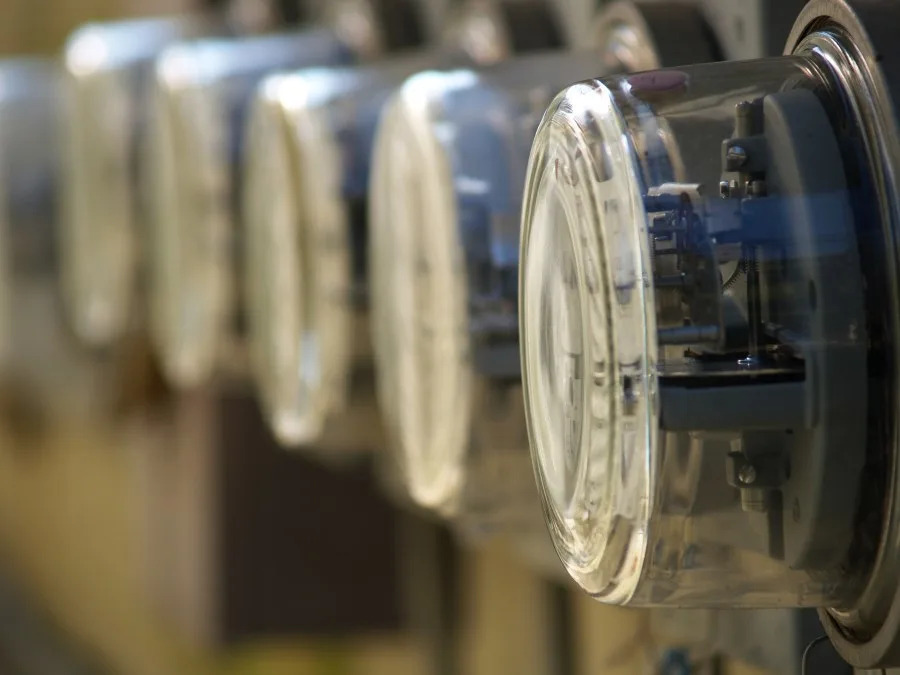


Comments